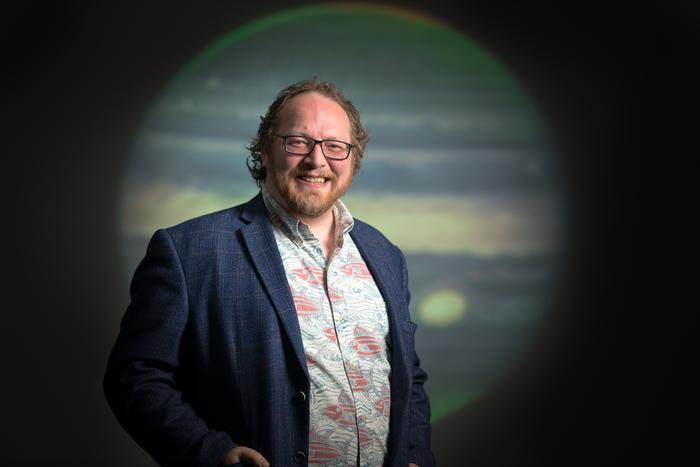A professor from Northumbria University in the North East region of England has been granted telescope time with NASA’s James Webb Space Telescope (JWST) later this year to study Jupiter’s upper atmosphere, also known as its ionosphere. Being granted such access to JWST is extremely competitive which makes getting access to use its powerful instruments to study the cosmos a very high honor.
Dr. Tom Stallard, who is a professor in the Mathematics, Physics and Electrical Engineering department at Northumbria University, is the only scientist who will be granted access to JWST in 2023 for observing planets within our solar system, which will commence on September 7. He hopes to use the most powerful telescope ever built to learn how Jupiter’s ionosphere is affected by both the space environment above and Jupiter’s lower atmosphere beneath it.

“Although Jupiter appears very different to Earth there is actually much we can learn about our own planet by studying Jupiter,” said Dr. Stallard. “The processes going on are very similar, but Jupiter’s magnetic field is much stronger, and stranger. Time on the James Webb Space Telescope is rare – and time to study planets within our solar system is even rarer, so to be given this opportunity is incredibly exciting.”
Dr. Stallard was granted access to JWST through the Space Telescope Science Institute’s General Observer (GO) program, which is broken up into observing cycles and allows scientists and astronomers to apply for telescope time with JWST. The GO program has been slated to encompass the majority of the observation time for JWST, with Cycle 1 running from July 2022 to July 2023 and Cycle 2 commencing immediately thereafter.
Dr. Stallard’s proposal, “Unveiling Jupiter’s upper atmosphere and constraining atmospheric loss from Giant Planets”, was selected for the JWST Cycle 2 GO Program, with the entire list of approved proposals available here. For Dr. Stallard’s study, his team will use JWST to conduct 36 observations of Jupiter’s atmospheric edge, also known as the limb, with 19 of those observations occurring at Jupiter’s dawn and the remainder occurring at Jupiter’s dusk.
Dr. Stallard’s usage of JWST coincides with when NASA’s Juno spacecraft, which is currently orbiting Jupiter, will be on the opposite side of the planet and pointed at Earth. With JWST being located at the Earth-Moon L2 Lagrange Point on the opposite side of the Earth’s Moon and pointed at Jupiter, this means Dr. Stallard will have a rare opportunity to examine images taken from both sides of Jupiter simultaneously. The goal of these observations will be to gain a better understanding of Jupiter’s atmospheric loss to space, along with gaining a better understand about the formation and evolution of exoplanets, since Jupiter is frequently used as an analog for studying gaseous exoplanets.

“Securing access to the James Webb Space Telescope is a highly competitive process and is a testament to the quality and timeliness of the research that Professor Stallard undertakes,” said Dr. Louise Bracken, who is Pro Vice-Chancellor (Research and Knowledge Exchange) at Northumbria University. “This award underlines and builds on the existing work of our Solar and Space Physics researchers at Northumbria University and cements the North East’s reputation as a center of excellence in this field.”
While this opportunity marks the first time Dr. Stallard will be using JWST to observe Jupiter, this will not mark the first time JWST has observed the largest planet in the solar system, as the powerful telescope used its Near-Infrared Camera (NIRCam) to capture some breathtaking images of Jupiter in August 2022, including the planet’s rings, auroras, and one of the irregular-shaped moons, Amalthea.

What new insights will scientists gain about Jupiter’s and its ionosphere from these observations? Only time will tell, and this is why we science!
As always, keep doing science & keep looking up!

